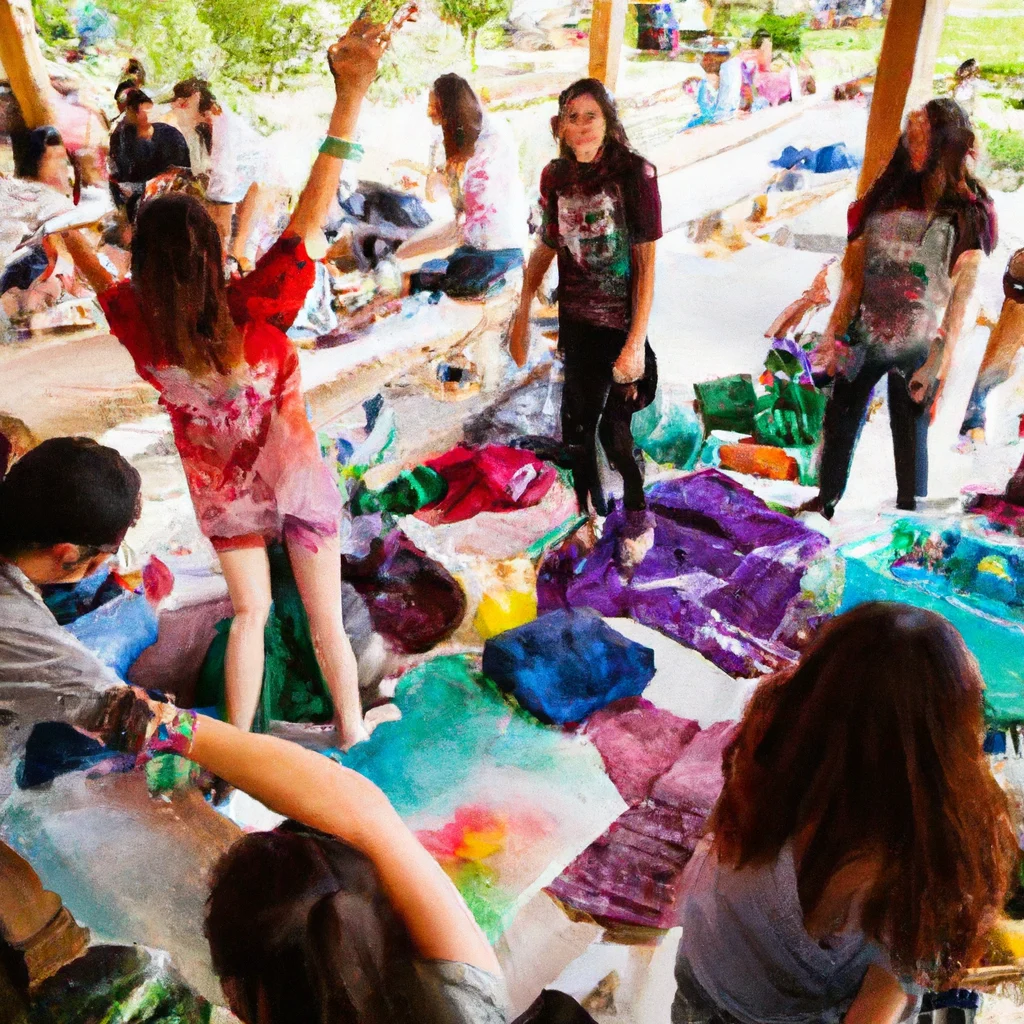The tie-dye trend has recently resurfaced as a popular fashion statement in America, inspiring a wave of DIY projects that allow individuals to express their creativity. This revival not only highlights the artistic potential of fabric manipulation but also embraces sustainability by promoting upcycling and personal expression. In this article, we will present a comprehensive guide to tie-dye techniques, materials, and project ideas that can elevate your wardrobe and home décor.
Understanding Tie-Dye Techniques
Tie-dye is a method of creating patterns on fabric through the application of dyes in various techniques. The process involves folding, twisting, or bunching the fabric and securing it with rubber bands or string. This section will explore the fundamental techniques that can give rise to unique designs.
Basic Tie-Dye Techniques
1. Classic Spiral: This technique involves twisting the fabric from the center to create a spiral shape. After securing the fabric with rubber bands, apply dyes in sections radiating outward.
2. Crinkle or Scrunch: For this method, the fabric is crumpled into a ball and secured with rubber bands. Dyes can be applied randomly or in a specific color order to achieve a more abstract look.
3. Bullseye: Achieved by pulling up sections of fabric from a central point and securing them with rubber bands, the bullseye method results in concentric circles of color.
4. Shibori: Originating from Japan, Shibori techniques include folding, stitching, and binding the fabric to create intricate patterns. This method combines traditional craftsmanship with modern aesthetics.
5. Ombre: The ombre technique allows for a gradient effect, which can be achieved by dipping the fabric in dye at varying depths or by applying dye in a linear fashion.
Materials Needed for Tie-Dye Projects
The success of tie-dye projects greatly depends on the quality of materials used. Below is a list of essential items required for effective tie-dyeing.
Fabric Choices
Selecting the right fabric is crucial. Natural fibers, such as cotton, rayon, and silk, absorb dye better than synthetic materials. Here are some popular choices:
– Cotton: The most common choice for tie-dye due to its excellent dye absorption and versatility.
– Rayon: Offers a smooth finish and vibrant colors but may require special care.
– Silk: Provides a luxurious feel and rich color but can be more challenging to work with.
Dyes and Color Options
When it comes to dyes, there are various options available:
– Fiber Reactive Dyes: Ideal for cotton and other natural fibers, these dyes bond chemically with the fabric, resulting in bright and long-lasting colors.
– Tulip One-Step Tie-Dye Kit: A convenient option that simplifies the dyeing process with pre-mixed colors.
– Natural Dyes: For an eco-friendly approach, consider using plant-based dyes derived from fruits, vegetables, and spices.
Tools and Accessories
Having the right tools can make the tie-dye process smoother:
– Rubber Bands and String: Secure fabric tightly to create distinct patterns.
– Plastic Squeeze Bottles: Perfect for controlled dye application.
– Gloves and Aprons: Protect your skin and clothes from dye stains.
– Plastic Wrap or Trash Bags: Use these to cover dyed fabrics while they set.
Step-by-Step Tie-Dye Instructions
Now that we have gathered our materials, let us walk through the tie-dye process step-by-step.
Preparation Phase
1. Choose Your Workspace: Ensure you work in a well-ventilated area, preferably outside or in a space that can handle potential dye spills.
2. Pre-Wash Your Fabric: Remove any sizing agents that may hinder dye absorption.
3. Plan Your Design: Visualize your pattern and decide on color placement before starting.
Dye Application Process
1. Fold and Secure the Fabric: Use your chosen technique (e.g., spiral or bullseye) to fold the fabric and secure it with rubber bands.
2. Mix Your Dyes: Follow the instructions provided for your dye to prepare the colors.
3. Apply the Dye: Using squeeze bottles, apply dye to the sections of the fabric, ensuring adequate saturation.
4. Set the Dye: Wrap the dyed fabric in plastic to retain moisture and allow the dye to set for several hours or overnight, depending on the dye type.
Rinsing and Drying
1. Rinse the Fabric: Once the dye has set, rinse the fabric under cold water until the water runs clear to remove excess dye.
2. Wash the Fabric: Machine wash separately with mild detergent.
3. Dry the Fabric: Air dry or tumble dry on low heat, and your tie-dye creation is ready to wear or use.
Creative Tie-Dye Project Ideas
Beyond clothing, tie-dye techniques can enhance various items. Below are some project ideas that utilize tie-dye.
Customized Apparel
– T-Shirts: Create unique designs for casual wear or gifts.
– Hoodies: Add a splash of color to your outerwear.
– Socks and Accessories: Experiment with smaller items for a fun twist.
Home Décor
– Pillowcases: Brighten your living space with tie-dye pillow covers.
– Tablecloths: Add a personal touch to your dining area with a custom tablecloth.
– Curtains: Create a statement piece for your windows.
Event Decorations
– Party Banners: Use tie-dye techniques to craft colorful banners for celebrations.
– Table Settings: Design unique table runners or napkins for festive occasions.
Caring for Tie-Dyed Items
To maintain the vibrancy of your tie-dye creations, proper care is essential. Here are some tips to prolong the life of your items:
1. Wash Separately: Always wash tie-dyed items separately for the first few washes to avoid color bleeding.
2. Use Cold Water: Washing in cold water helps preserve colors and prevent fading.
3. Avoid Harsh Chemicals: Stay away from bleach or strong detergents that can damage the fabric.
The Sustainability Aspect of Tie-Dye
The tie-dye revival aligns with the growing trend of sustainability in fashion. By engaging in DIY projects, individuals can reduce waste and promote eco-friendly practices. Upcycling old garments through tie-dye not only gives them a new lease on life but also encourages a shift away from fast fashion.
Conclusion
As we have outlined, the tie-dye trend is more than just a fashion statement; it is a form of artistic expression that embraces individuality and sustainability. By utilizing various techniques and materials, anyone can create stunning tie-dye pieces that reflect their personal style. For those looking to explore more lifestyle trends and DIY projects, consider visiting Nivax Lifestyle at nivax.net.
This comprehensive guide serves as a blueprint for anyone interested in diving into the colorful world of tie-dye. With creativity and some basic techniques, the possibilities are endless.


